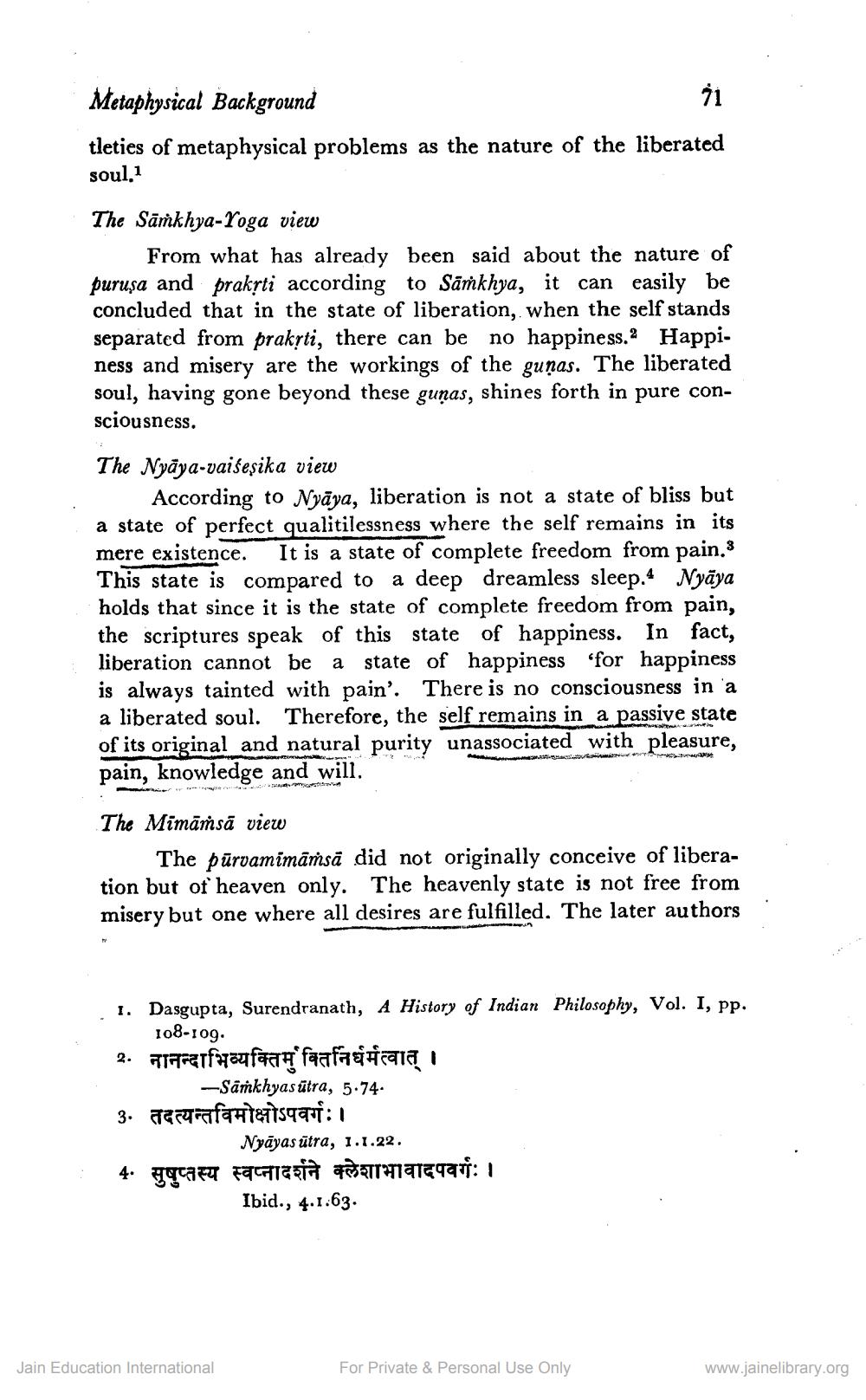________________
Metaphysical Background
71
tleties of metaphysical problems as the nature of the liberated soul.1
The Samkhya-Yoga view
From what has already been said about the nature of purusa and prakṛti according to Samkhya, it can easily be concluded that in the state of liberation, when the self stands separated from prakṛti, there can be no happiness.2 Happiness and misery are the workings of the gunas. The liberated soul, having gone beyond these gunas, shines forth in pure consciousness.
The Nyaya-vaisesika view
According to Nyaya, liberation is not a state of bliss but a state of perfect qualitilessness where the self remains in its mere existence. It is a state of complete freedom from pain.3 This state is compared to a deep dreamless sleep. Nyaya holds that since it is the state of complete freedom from pain, the scriptures speak of this state of happiness. In fact, liberation cannot be a state of happiness for happiness is always tainted with pain'. There is no consciousness in a a liberated soul. Therefore, the self remains in a passive state of its original and natural purity unassociated with pleasure, pain, knowledge and will.
The Mimāmsā view
The purvamimāṁsā did not originally conceive of liberation but of heaven only. The heavenly state is not free from misery but one where all desires are fulfilled. The later authors
1. Dasgupta, Surendranath, A History of Indian Philosophy, Vol. I, pp. 108-109.
2. नानन्दाभिव्यक्तिमुक्तिनिर्धर्मत्वात् ।
-Samkhyasutra, 5.74.
3. तदत्यन्तविमोक्षोऽपवर्गः ।
Nyayasutra, 1.1.22.
4. सुषुप्तस्य स्वप्नादर्शने क्लेशाभावादपवर्गः ।
Ibid., 4.1.63.
Jain Education International
For Private & Personal Use Only
www.jainelibrary.org




